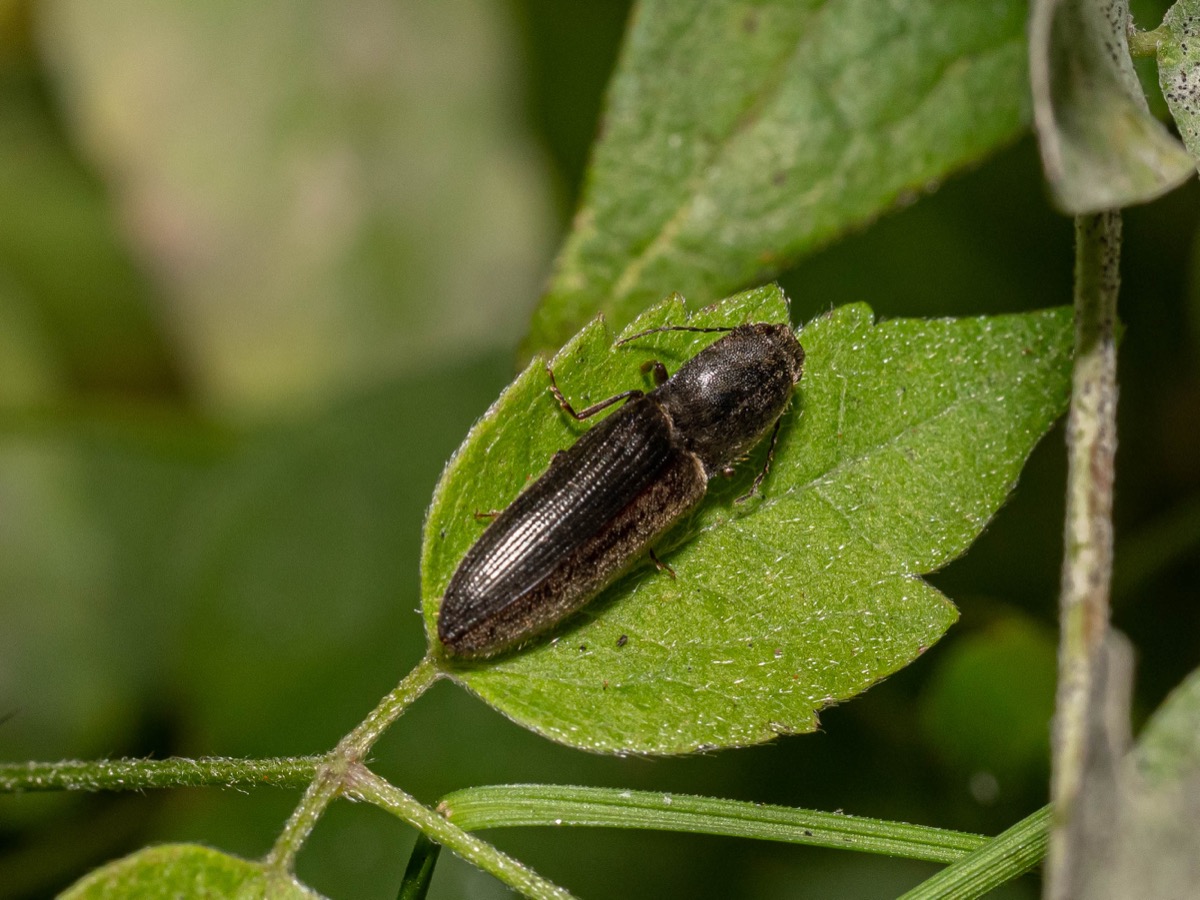The Elateridae – Click Beetles
The Elateridae family, commonly called “click beetles” or “taupins” in French, is a family of beetles in the order Coleoptera. They are known for their distinctive traits, particularly their ability to jump into the air using a special mechanism called a “clicking reaction” or “spring jump.” These jumps help click beetles right themselves when on their backs and may allow them to escape predators or move more easily on the ground.
Characteristics
Body shape:
Click beetles have an elongated and generally flat body, allowing them to easily slip under tree bark, into soil, or into other organic matter.
Antennae:
They have fairly long and often segmented antennae.
Biology:
Click beetles are mainly xylophagous insects, meaning they feed on decaying wood, roots, and decomposing organic matter. Some are also herbivorous and feed on plants.
Life cycle:
Most click beetles undergo complete metamorphosis, progressing through egg, larva, pupa, and adult stages. The larvae are sometimes called “wireworms” due to their elongated appearance and hard exoskeleton. Some species’ larvae can damage crops by feeding on roots.
Distribution:
Click beetles are found worldwide, except in polar regions. They are especially common in forests and moist habitats, but can also be found in agricultural areas and gardens.
Ecological importance:
Click beetles play an important role in ecosystems by contributing to the decomposition of organic matter. As decomposers, they help recycle nutrients and maintain ecological balance.
Behavior:
Some click beetles are nocturnal, while others are active during the day. Their spring-jump behavior is often used as a defense mechanism against predators.
Genus Athous
Beetles of the genus Athous are generally medium-sized, with elongated and flattened bodies typical of click beetles. They have fairly long and slender antennae, and their elytra (forewings) are solid and well developed, fully covering the abdomen.
Species of the genus Athous vary in coloration, but often display dark or brownish tones, with lighter markings on the body. Like other members of the Elateridae family, Athous beetles possess the unique ability to perform a “click jump” when placed on their backs or in distress. This mechanism allows them to quickly right themselves by bending their body and releasing stored energy, which propels them into the air so they land on their legs and regain a normal posture.
Beetles of the genus Athous are typically associated with forest habitats, but can also be found in grasslands, wetlands, and gardens. They play an ecological role as decomposers, feeding on decaying organic matter and helping recycle nutrients within ecosystems.
Athous haemorrhoidalis
| Order | Coleoptera |
|---|---|
| Family | Elateridae |
| Genus | Athous |
| Species | Haemorrhoidalis |
| Common name | Mahogany Click Beetle |
| Identifier | Fabricius |
| Year identified | 1801 |
| Protected | Not protected |
| IUCN category (2001-2003) | Not classified |
| Habitat | Grasslands |
| Diet | Polyphagous |
| Color | Dark brown |
| Antennae | Dark brown, 11 segments, segments 4–11 slightly serrated |
| Pronotum | |
| Elytra | Mahogany-brown with striations |
| Legs | Reddish-brown, third tarsus more developed |
| Range | Europe, Asia |
| Min size | 9 |
| Max size | 15 |
| Period start | May |
| Period end | August |
